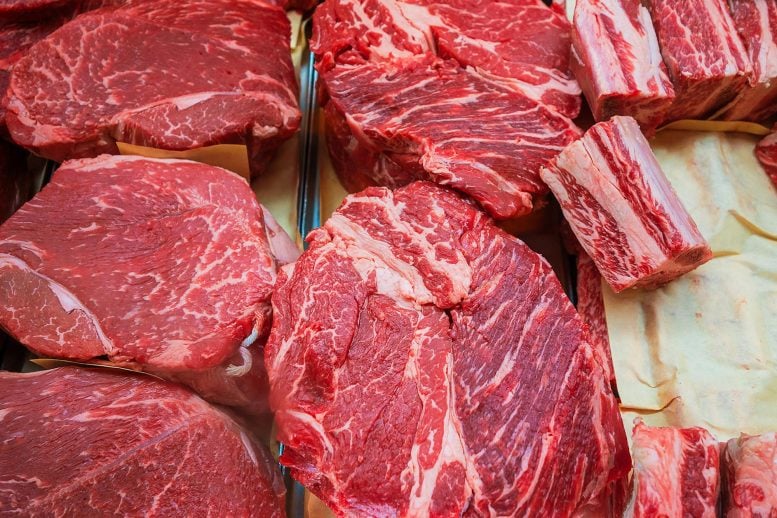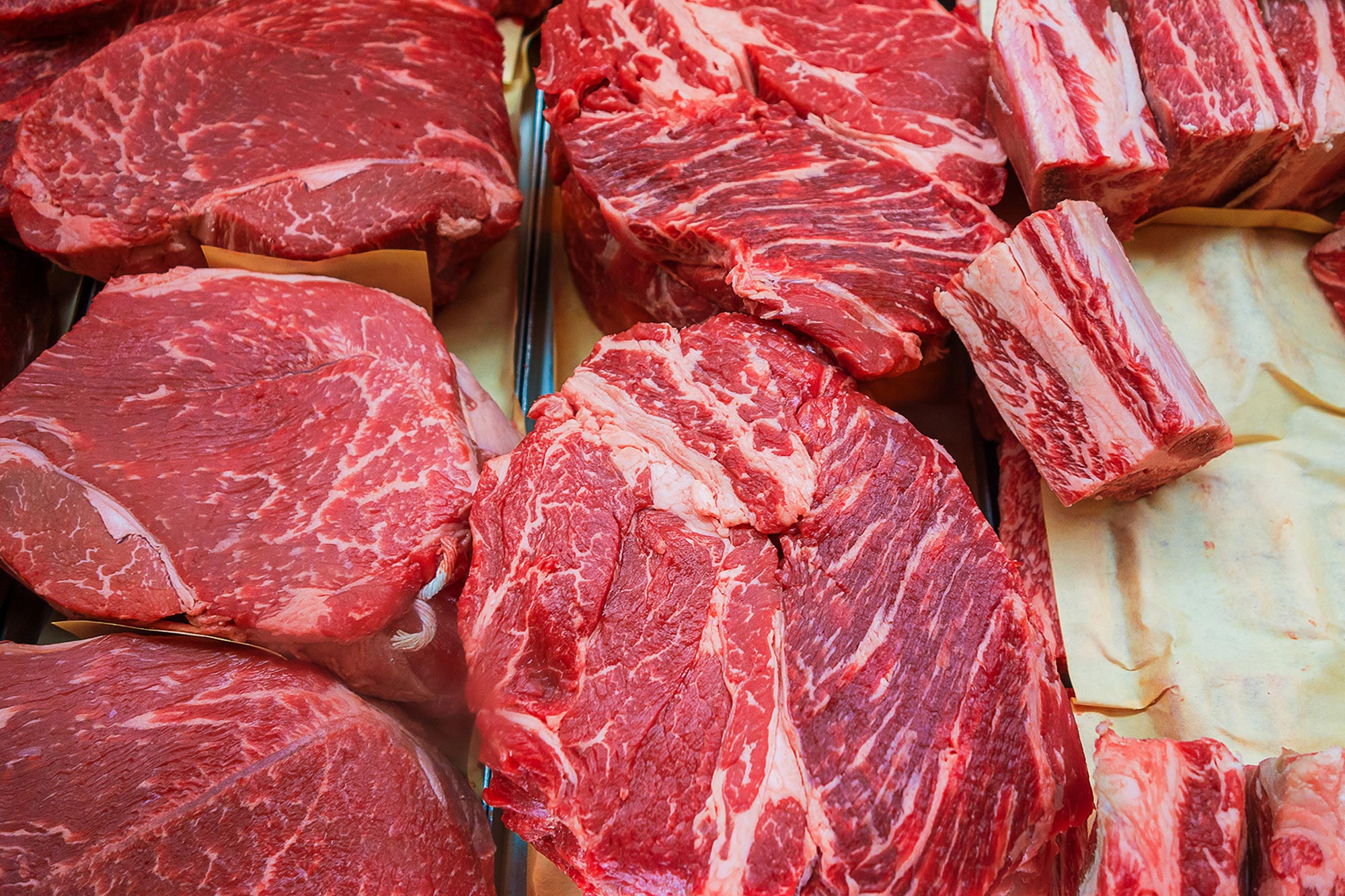
Research from Harvard University shows that high intake of heme iron, found in red meat, is associated with a 26% increased risk of type 2 diabetes.
- Researchers have found a significant association between heme iron – iron found in red meat and other animal products – and the risk of type 2 diabetes (T2D), as well as the metabolic pathways underlying this association.
- Non-heme iron – iron found in plant foods – has not been linked to the risk of type 2 diabetes.
- The study suggests that reducing heme iron from red meat and eating a plant-rich diet may reduce diabetes risk. And it raises concerns about adding heme to increasingly popular plant-based meat alternatives.
Iron absorption and diabetes risk
Higher intake of heme iron, such as that found in red meat and other animal products — as opposed to non-heme iron, which is found primarily in plant foods — has been linked to a higher risk of developing type 2 diabetes (T2D) in a new study led by researchers at Harvard TH Chan School of Public Health. While the link between heme iron and T2D has been described before, the study’s findings provide more evidence and explanation of the link.
“Compared with previous studies that relied solely on epidemiological data, we integrated multiple levels of information, including epidemiological data, conventional metabolic biomarkers and cutting-edge metabolomics,” said lead author Fenglei Wang, a research associate in the Department of Nutrition. “This allowed us to better understand the association between iron intake and type 2 diabetes risk, as well as the potential metabolic pathways underlying this association.”
The study was published on August 13 in the journal Natural metabolism.
Results of the longitudinal study
Researchers examined the link between iron and type 2 diabetes using 36 years of dietary records from 206,615 adults participating in the Nurses’ Health Studies I and II and the Health Professionals Follow-up Study. They looked at intakes of different forms of iron – total iron, heme iron, non-heme iron, dietary iron (from foods) and supplemental iron (from supplements) – and their type 2 diabetes status, while controlling for other health and lifestyle factors.
The researchers also analyzed the biological mechanisms underlying the relationship of heme iron to type 2 diabetes in smaller subgroups of participants. They studied 37,544 participants. plasma Metabolic biomarkers, including those related to insulin Values, blood sugar, blood lipids, inflammation and two biomarkers of iron metabolism. They then examined the metabolomic profiles of 9,024 participants – plasma levels of low molecular weight metabolites, i.e. substances that arise from bodily processes such as the breakdown of food or chemicals.
Associations with diabetes and nutritional implications
The study found a significant association between higher heme iron intake and type 2 diabetes risk. Participants in the highest intake group had a 26% higher risk of developing type 2 diabetes than participants in the lowest intake group. In addition, the researchers found that heme iron accounts for more than half of the type 2 diabetes risk associated with unprocessed red meat and a moderate proportion of the risk associated with several type 2 diabetes-related dietary patterns. Consistent with previous studies, the researchers found no significant associations between nonheme iron intake from food or supplements and type 2 diabetes risk.
The study also found that higher heme iron intake was associated with metabolic biomarkers in the blood associated with type 2 diabetes. Higher heme iron intake was associated with higher levels of biomarkers such as C-peptide, triglycerides, C-reactive protein, leptin, and markers of iron overload, as well as lower levels of useful biomarkers such as HDL cholesterol and adiponectin.
The researchers also identified a dozen blood metabolites – including L-valine, L-lysine, uric acid acidand several lipid metabolites – which may play a role in the association between heme iron intake and TD2 risk. These metabolites have previously been linked to the risk of T2D.
Public health implications and dietary recommendations
At the population level, the study results have important implications for dietary guidelines and public health strategies to reduce diabetes rates, according to the researchers. In particular, the findings raise concerns about the addition of heme to plant-based meat alternatives to improve their meaty taste and appearance. These products are becoming increasingly popular, but the health effects require further investigation.
“This study highlights the importance of healthy dietary habits in diabetes prevention,” said corresponding author Frank Hu, Fredrick J. Stare Professor of Nutrition and Epidemiology. “Reducing heme iron intake, particularly from red meat, and switching to a more plant-based diet may be effective strategies to reduce diabetes risk.”
The researchers pointed out that the study has several limitations, including the possibility of incomplete accounting for confounding factors and measurement error in the epidemiological data. In addition, the results – which are based on a study population that was predominantly white – need to be generalized to other racial and ethnic groups.
Reference: “Integration of epidemiological and blood biomarker analyses links heme iron intake to increased type 2 diabetes risk” by Fenglei Wang, Andrea J. Glenn, Anne-Julie Tessier, Zhendong Mei, Danielle E. Haslam, Marta Guasch-Ferré, Deirdre K. Tobias, A. Heather Eliassen, JoAnn E. Manson, Clary Clish, Kyu Ha Lee, Eric B. Rimm, Dong D. Wang, Qi Sun, Liming Liang, Walter C. Willett, and Frank B. Hu, August 13, 2024, Natural metabolism.
DOI: 10.1038/s42255-024-01109-5
Other Harvard-Chan authors included Andrea Glenn, Anne-Julie Tessier, Danielle Haslam, Marta Guasch-Ferré, Deirdre Tobias, Heather Eliassen, JoAnn Manson, Kyu Ha Lee, Eric Rimm, Dong Wang, Qi Sun, Liming Liang, and Walter Willett.
“Integration of epidemiological and blood biomarker analyses links heme iron intake to increased type 2 diabetes risk,” Fenglei Wang, Andrea J. Glenn, Anne-Julie Tessier, Zhendong Mei, Danielle E. Haslam, Marta Guasch-Ferré, Deirdre K. Tobias, A. Heather Eliassen, JoAnn E. Manson, Clary Clish, Kyu Ha Lee, Eric B. Rimm, Dong D. Wang, Qi Sun, Liming Liang, Walter C. Willett, Frank B. Hu, Nature Metabolism, August 13, 2024, doi: 10.1038/s42255-024-01109-5




